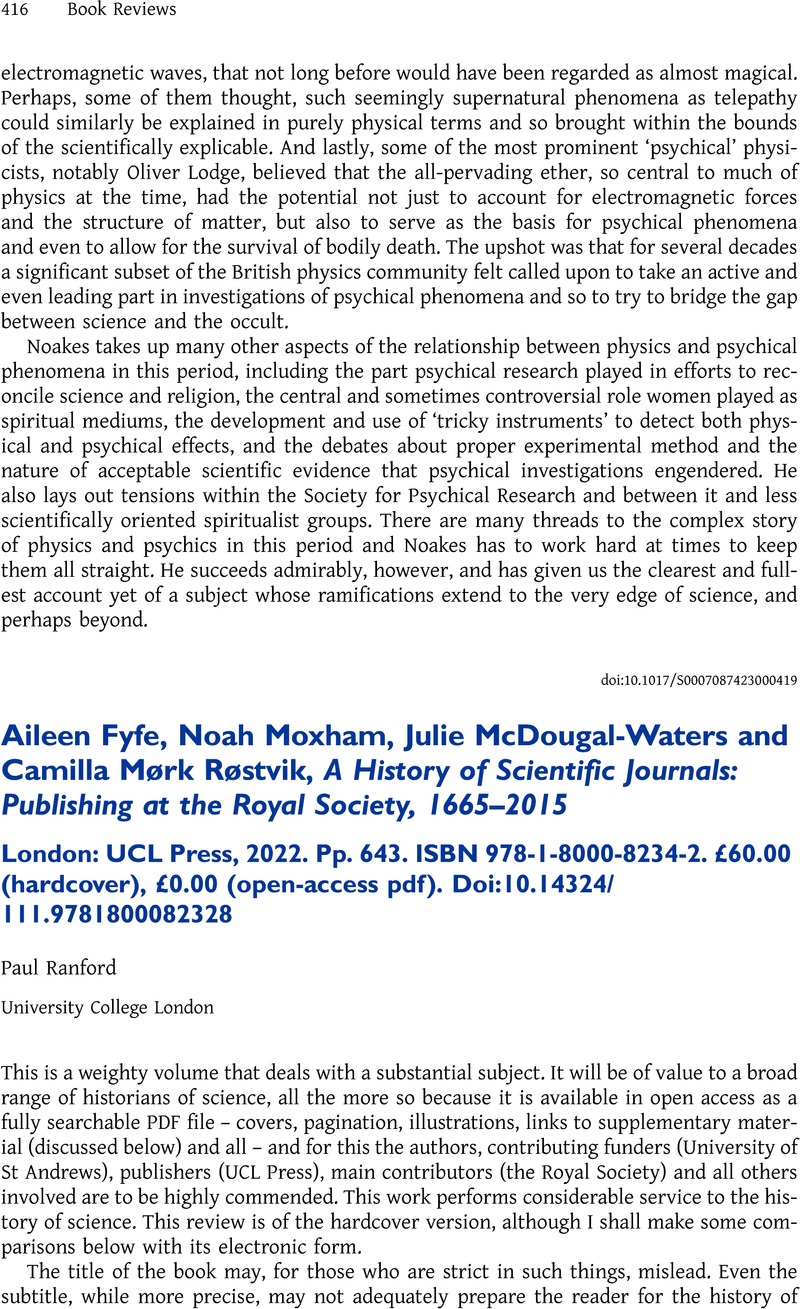No CrossRef data available.
Article contents
Aileen Fyfe, Noah Moxham, Julie McDougal-Waters and Camilla Mørk Røstvik, A History of Scientific Journals: Publishing at the Royal Society, 1665–2015 London: UCL Press, 2022. Pp. 643. ISBN 978-1-8000-8234-2. £60.00 (hardcover), £0.00 (open-access pdf). Doi:10.14324/111.9781800082328
Review products
Aileen Fyfe, Noah Moxham, Julie McDougal-Waters and Camilla Mørk Røstvik, A History of Scientific Journals: Publishing at the Royal Society, 1665–2015 London: UCL Press, 2022. Pp. 643. ISBN 978-1-8000-8234-2. £60.00 (hardcover), £0.00 (open-access pdf). Doi:10.14324/111.9781800082328
Published online by Cambridge University Press: 31 August 2023
Abstract
An abstract is not available for this content so a preview has been provided. Please use the Get access link above for information on how to access this content.

- Type
- Book Review
- Information
- The British Journal for the History of Science , Volume 56 , Issue 3 , September 2023 , pp. 416 - 418
- Copyright
- Copyright © The Author(s), 2023. Published by Cambridge University Press on behalf of British Society for the History of Science



